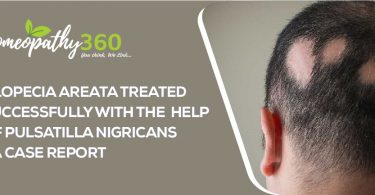
As with any profession, subject or trade, Homoeopathy practice too has techniques, which are to be studied and learnt thoroughly. The following are for treatment of chronic diseases only.
[Homoeopathy, both teaching and practice, is in shambles. Whether in seminar or articles in homoeopathy journals everyone thinks that he can get away by uttering the words totality-of-symptoms, constitution, constitutional remedy, miasm etc. Beyond this, you ask anything they would start limping.]While studying this paper, the reader must have on his table the following reference books; otherwise, he learns nothing from what I write:
HOMOEOPATHIC THERAPEUTICS by Dr. Samuel Lilienthal (hereinafter called Lilienthal’s.)
REPERTORY by Dr. Calvin B. Knerr
THE ACCOUCHEUR’S EMERGENCY MANUAL by Dr. W. A. Yingling
WILKINSON’S MATERIA MEDICA by Dr. J. K. Wilson and Dr. V. Krishnamurthy (the author of this paper.)
BOERICKE’S MAT. MEDICA AND REPERTORY
J. T. KENT’S REPERTORY
Technique No. 1: While treating a child (1 to 7 years) if it is having a chronic complaint that started within the first year of birth, the foremost rubric that a practitioner has to write down on his case sheet is the following:
Constitutional syphilis–infantile syphilis: Fer-iod., Calc-carb, Calc-iod., Hep., Kali iod., Merc-sol., Mez., Lach., Nit-ac., Phyt., Sang., Thuj., Viol-t (See page 238 of my book MATERIA MEDICA OF MIND & GENERAL SYMPTOMS, or page no. 1021 of Lilienthal’s.)
If the reader does not have a copy of Lilienthal, he should first buy that and then read further. Without all the above reference works, it would be a mockery of homoeopathy.
Technique No. 2 a: When you treat a chronic case of tonsillitis or thyroid, first write down the following on your case sheet:
(Page No. 943—Lilienthal’s)—Scrofulosis—glandular affections: Bar-c., Bell., Calc-carb., Carb-an., Cist., Clem., Con., Dulc., Graph., Hep., Kali-c., Lapis., Lyc., Merc., Nit-ac., Phos., Rhus., Sil., Staph., Sulph.
Technique No. 2-b: So also, for patients with bones affections (spondylitis etc.) with a family history of Tonsils/Thyroid/Tuberculosis, take the following:
(page 943—Lilienthal’s] Scrofulosis: bones, affections of: Asaf., Aur-met., Bell., Calc-carb., Cist., Hep., Merc., Mez., Nit-ac., Phos., Rhus., Ruta., Sil., Staph., Sulph.
Explanatory note: Tuberculosis in the family may, in the future offspring affect bones or glands, it may cause potbelliedness in children, or cause cutaneous affections (scrofulodermata) and the rubric for these affections are called Scrofulosis.
Further Explanatory note: For chronic affections of bones the practitioner has to take the above rubric (Scrofulosis—bones, affections….). However, nightly bring pain in bones is due to syphilis.
Technique No. 3: Write on your case sheet ‘Syphilis” while treating the following chronic diseases: Diabetes, migraine, heart affections, insanity, sciatica, neuralgias, a person running away from home and never to return, nightly boring/digging pain in bones, suicidal disposition, all heart ailments, stillbirth, repeated abortion, lesions, epilepsy, vision complaints. For these, you must take the forty-eight remedies given against SYPHILIS IN Kent’s Repertory—in the last chapter Generalities.
Technique No. 4: Congestion. When two or more complaints are in one place of the body, write the word Congestion in your case sheet. Suppose a person reports more than one complaint above neck. E. g., headache and vertigo. You jump to see the rubrics Headache and Vertigo separately. You must write ‘Congestion’ for selecting the remedy. In addition, two or more complaints above neck, e.g., otitis media, headache, sneezing, dandruff, hair fall etc. do not look in the repertory for each of the symptom but take only congestion, or ‘congestion to head’ for repertory. (See CONGESTION—in the last chapter GENERALITIES in Kent’s Repertory.)
Technique 5: While repertorising, do not feed all the symptoms in the computer or look into the repertory. YOU MUST ARRANGE THE SYMPTOMS IN ORDER OF THEIR GRADES OR VALUES.
Technique 6: Where will you use the term ‘constitution’ or ‘constitutional’ for selecting the remedy either through the repertory or with the help of homoeo software? Some of the frequently useful diseases where ‘constitutional’ is used as a prefix or ‘constitution’ as a suffix, are: anaemic, asthmatic, bilious, Cachexia or cachectic, cancerous, carbo-nitrogenoid, catarrhal, dwarfish, dyspeptic, fibre, gouty, haemorrhagic, hemorrhoidal, herpetic, hydrogenoid, lymphatic, plethoric, psoric, rheumatic, scrofulous, sycotic, syphilitic, tuberculous, venous, weakly etc. For example, let us see where we would search in the materia medica for “constitution, cancerous.”
- If a person gets repeatedly cancer, for example, woman at her 39th year had stomach cancer and was treated in allopathy and completely relieved; five years later, she developed breast cancer, which too was treated and relieved. Three years later, she got cancer of uterus. The point is that cancer is not leaving her.
Or
- In a patient with cancer, if two or more persons in the family (blood relations) are having cancer.
In both the above case of patients, you may consider the following under the chapter STAGES OF LILFE AND CONSTITUTION in Calvin B. Knerr’s Repertory:
Constitution, cancerous: Con., Hydras., Mez., Sep; ulcer of os uteri, Curare (If more than two members in the same family has cancerous ulcer of os uteri, you may first think of the remedy Curare.
Similar to the above, if a person is having tuberculosis for years, resisting the treatment of allopathy or any other system (or, if more than one member in the family of a t.b. patient has tuberculosis, you may consider the following on page 1991 of Knerr’s Repertory.
Constitution, tuberculous: [long list of remedies and sub-rubrics under this.]
It is presumed and hoped that the reader will buy and open the pages of Knerr’s Repertory while reading this paper. That is why we give the name of the reference book and the page number. Mere reading this article would be of no use.
More or less similar to ‘constitution’, the other rubrics are Temperament, Diathesis, Habit and habitual, Age, Complexion; Occupation, and Size. For example, a woman of twenty-five years would pass stools once in three days and she does not bother about it. She has learnt to live with it and in no way affected mentally. Here we must take the rubric Habitual constipation.





